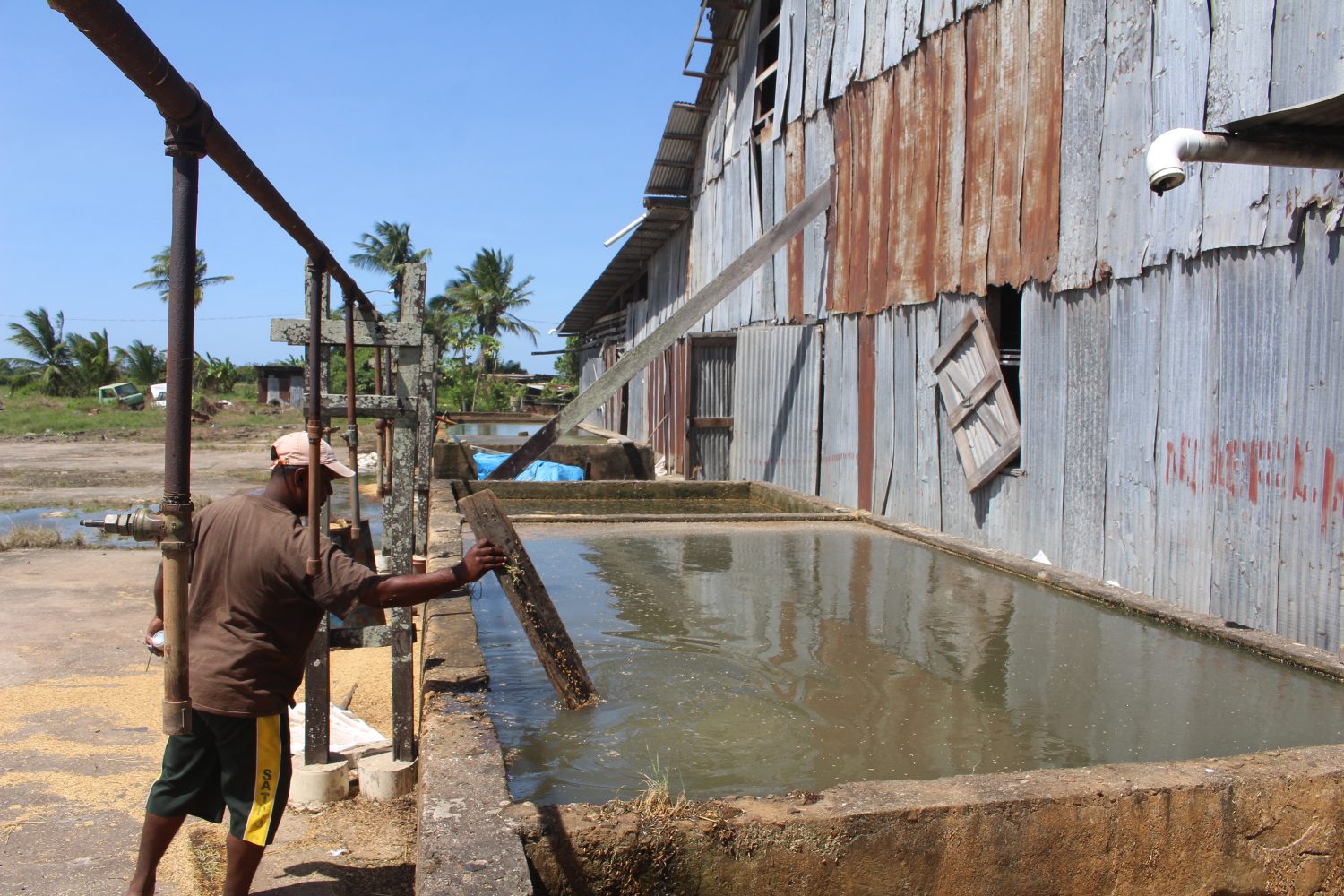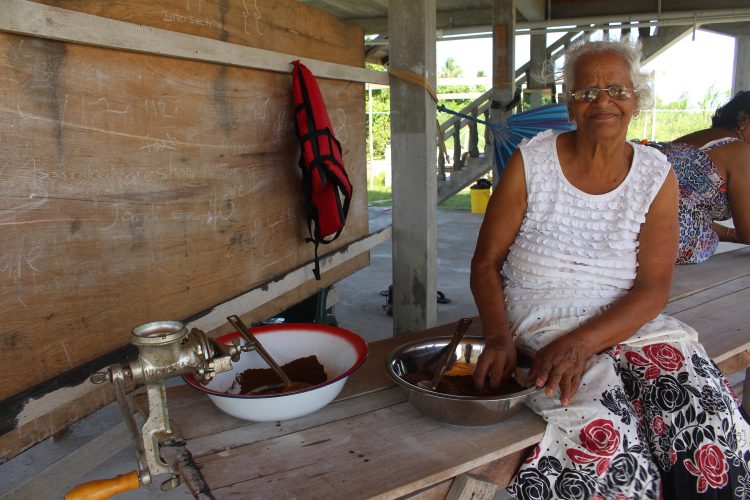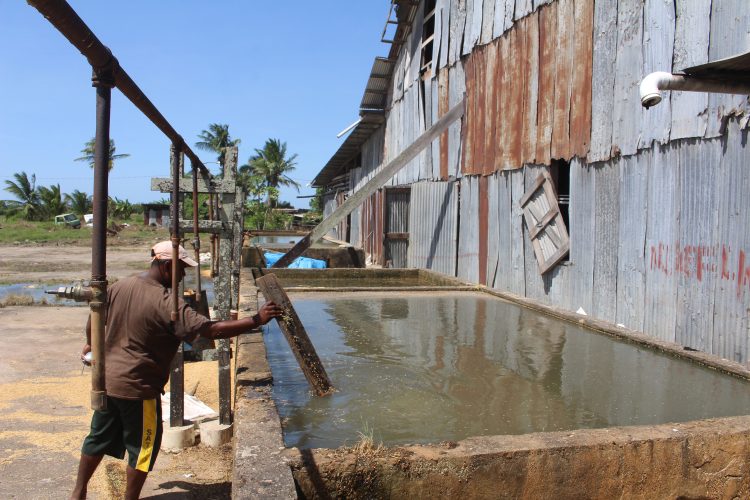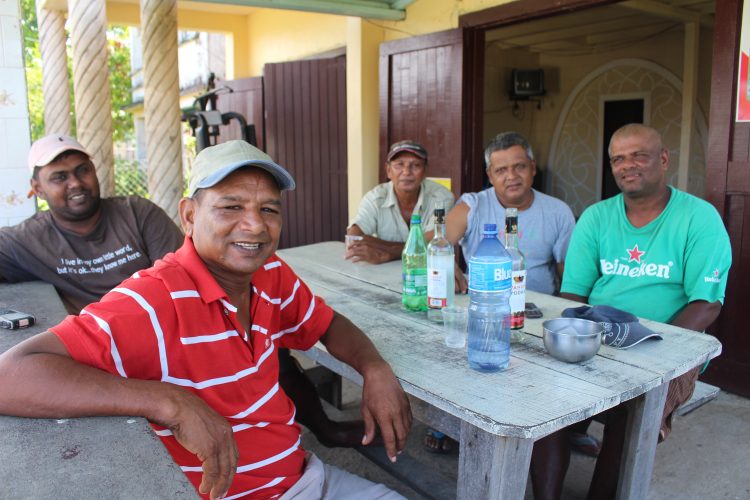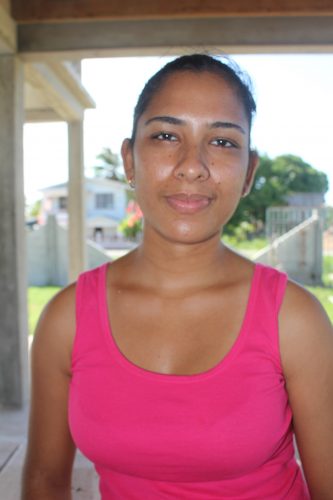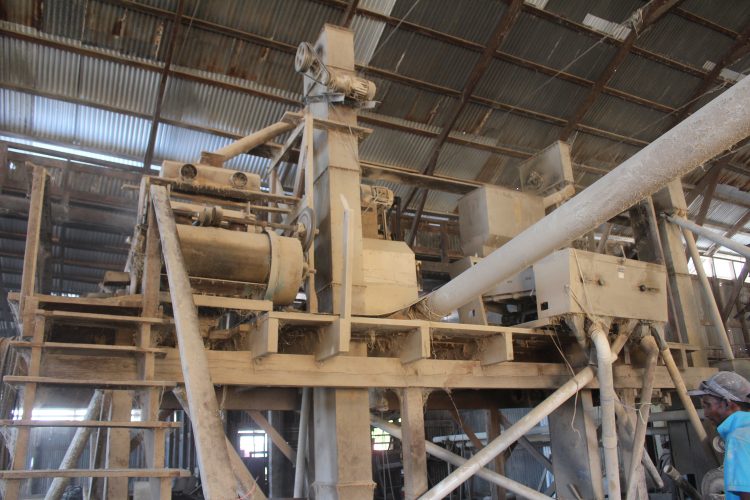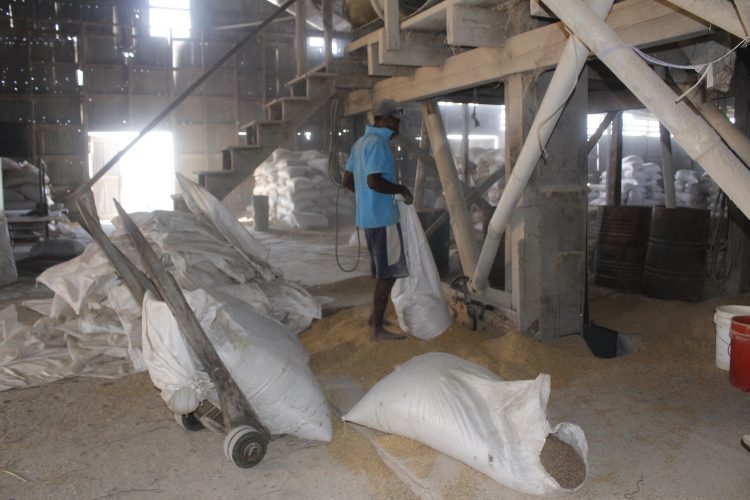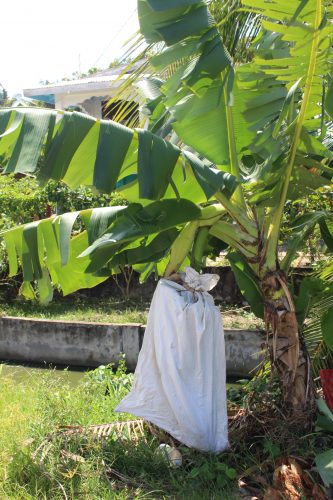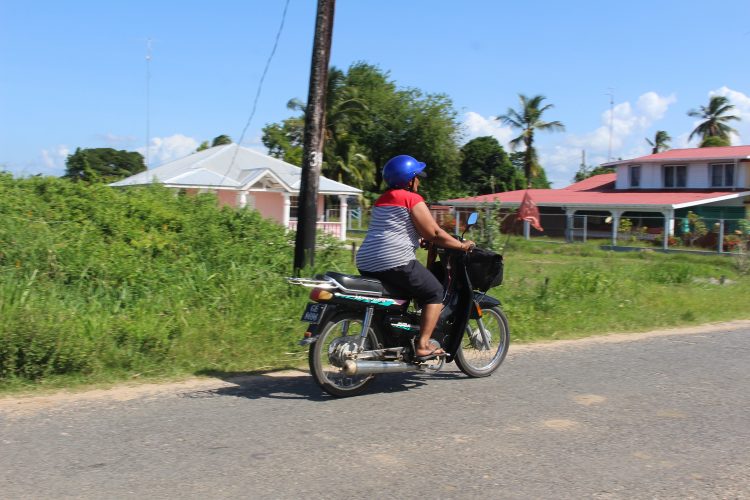Blenheim, is the second village in the south of Leguan, between Enterprise and Endeavour, less than a mile from the stelling. This little community houses approximately 150 persons, predominantly East Indians.
Having crossed a furious and foaming Essequibo from Parika in a small engine boat I arrived on the island. The wild river gave us a difficult time getting off the boat and by us I mean the few passengers including an Amerindian woman who gave stifled screams throughout the boat ride. Clutching her months-old baby and guided by her husband she gratefully climbed ashore.
A taxi and two minutes later I found myself standing outside the Leguan Cottage Hospital in Blenheim, in clean surroundings, free of people also or so it seemed save for the security guard keeping watch from her hut.
There was such little activity, one could walk in the middle of the road.
A short distance away at the Ojha Rice Milling Complex, Treshan Ojha was busy working along with his men. The rice mill has been in operation since 1960 and Treshan is a third generation Ojha.
Over all the noise, Treshan patiently explained the process of the white rice pointing out the different complex machinery for each task as he did. According to the man, the paddy is emptied into the hopper which is taken by an elevator to the cleaner then to the sheller which separates the paddy shell from the rice. The rice is then sent to the polisher where it is polished twice; the polisher gives it the sheen we see. Finally, the rice is graded and is separated into broken rice and whole rice. The broken rice is used for the making of chicken feed and Ojha Rice Milling Complex would usually sell it to Bounty Farm.
Asked about the rice market, Teshan said, “When we had the Venezuelan market the price was up and people received $3,500 to $4,000 a bag… Since 2015 the price has dropped to $1,500 to $2,100 a bag.”
He pays $50,000 per annum for the licence to operate.
Treshan attended Endeavour Primary before later attending Leguan Secondary. He had always known that one day he would join the family business. The village at one time had three rice mills, only the Ojha’s remains today although there are other mills on the island.
Whenever he is not working at the mill which is twice a year, he and his workers are in the backdam plowing, shying paddy, applying fertilizer or cutting the rice so there is always work year-round.
According to the man the rice industry thrived in his earlier days but not anymore although rice farming is still the life here; so is cattle rearing and according to a cattle farmer standing nearby, things have become stagnant on the island.
Asked whether his children would join the family business when they’re old enough, Treshan said they would not as he does not see them making a life for themselves from the business. Already he has plans to leave the island, though not for the next five years.
Seventy-three-year-old Jankaidai Parsram sat high up on a table looking on as close family friends and family took turns milling geera and massala; some of which are for an upcoming jandhi and some for relatives headed back overseas.
Parsram left her home in Leonora 52 years ago after getting married. Arriving at Blenheim she found the same amount of houses but the village itself had more people. Life here spelt hard work and with a growing family, she worked fervently beside her husband in the backdam where she spent two decades planting rice and rearing cattle.
She bore three children, one of whom is still alive today; she has 11 grandchildren and five great-grandchildren.
Parsram is an ardent Hindu visits both the Rama Krishna Mandirs situated in the village whenever the occasion arises.
She said the advantage to living there is that she is close to the hospital, mandirs and shops. Sometimes she added, she does not have to go to the shop because there are mobile shops that pass through the village every day.
Maheswarie Nandram, a teacher at Leguan Secondary, the only secondary school on the island was one of the persons assisting Parsram in preparation for her jandhi.
Nandram hails from a village call Richmond Hill, on the northern side of Leguan but life here is just the same for her so she feels right at home.
Though the Mathematics teacher has only taken up residence in Blenheim a year now, since getting married, she’s been teaching almost nine years at the school which is situated in the village, so she is acquainted with the life and people.
The school she says has an average population of 170 students with about 30 of them being from Blenheim.
Over the years she would have met with the parents of these children again and again; parents who she deems cooperative and who show up at PTA meetings.
“Rice farming was once the main activity here but is now merged with cattle rearing,” Nandram said.
She added that to get around the island, persons use the taxi service at a price of $500 for short drops or their own vehicles; most use motorcycles and bicycles. The taxi prices quickly rise as the distance lengthens. Nandram noted that this is not such an issue since villagers mostly travel once a month. What is an issue though, she said, is the low employment rate. She added that children on leaving school have to leave the island to find work. They seldom return.
Nandram said that though there is a playground it needs rehabilitating so the children often find themselves playing games at the Rice Producers Association Drying Floor. She wants the ground to be fixed and a vocational centre built so that skills can be taught to the children.
Pulmattie (only name given) was sitting in her verandah enjoying the quiet afternoon when I stopped by. The 79-year-old woman hails from the northern part of the island but grew up in Blenheim; she had moved there in her early years to live with her grandmother. By seventeen, she was married to a man of the village and remained there. Their union saw seven children; all of whom are still alive.
Although the hospital is just a handful of lots away, the woman said that back when she had her children women in labour never went to the hospital unless it was an emergency. The nurses and midwives went to their homes; all seven of her children were born at home.
Pulmattie’s memory of the village then was an area with fewer houses. She remembers planting rice in the backdam and when it was time to harvest, she armed herself with a grass knife working for hours in the back-breaking sun.
The woman stressed that though life in her days were physically harder, she pities this generation with the burdens of tax and unemployment and foresees tragedy. “Sooner or later people gon can’t afford to eat; times getting rougher,” Pulmattie said.
She then called her great grandson, Chaveer Tularam, proudly showing him off. Chaveer secured himself a spot at Anna Regina Secondary School upon writing this year’s National Grade Six Assessment but will be attending Leguan Secondary. He was first made mentioned by Nandram who said that since many of the children acquire a place at Leguan Secondary, it’s considered an accomplishment to be awarded a school off of the island.
Leaving the happy two with a concerned Pulmattie mentioning that with the very breezy afternoon, the waves might not be so nice, I started back out but not before visiting the seawall. Walking through a grassy track I was heralded by Blue Sackie birds crisscrossing my path ahead of me. The seawall shaded in some areas by old trees and the lulling of the waves provided a sort of tranquil therapy.
Seated again in a taxi and on my way back out the driver pointed out Blenheim’s Plantain Factory situated away from the road. The factory, he said, hasn’t begun operating as yet.
Back at the stelling, Pulmattie’s warning came to pass. Though there was only one other passenger, the captain was ready to leave. He said it was unlikely there would be any more passengers coming off the island as most would be returning to the island from work. Getting into the boat was a problem as it bobbed angrily on the water while the bowman struggled strenuously holding onto the rope to keep the boat at the steps so we could get on. With the help of the other passenger, a native of the island I started on but the bowman’s strength was no match for the waves and the boat was slammed against the steps and I was almost thrown off. It took two more tries before I was able to board. After a terribly rocky ride, we arrived safely at Parika.
